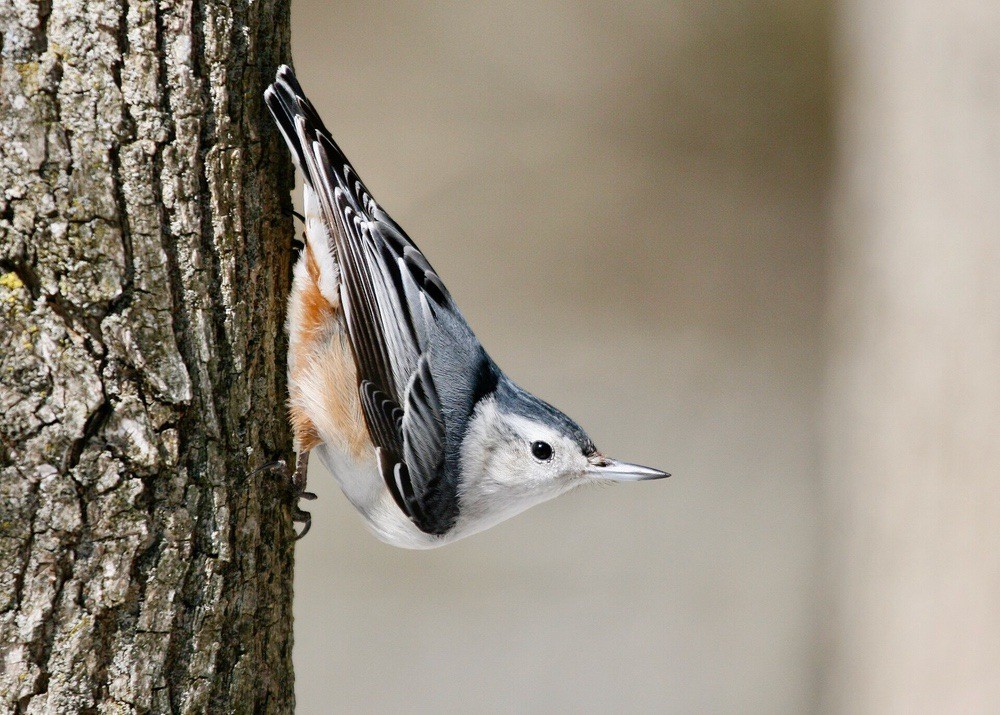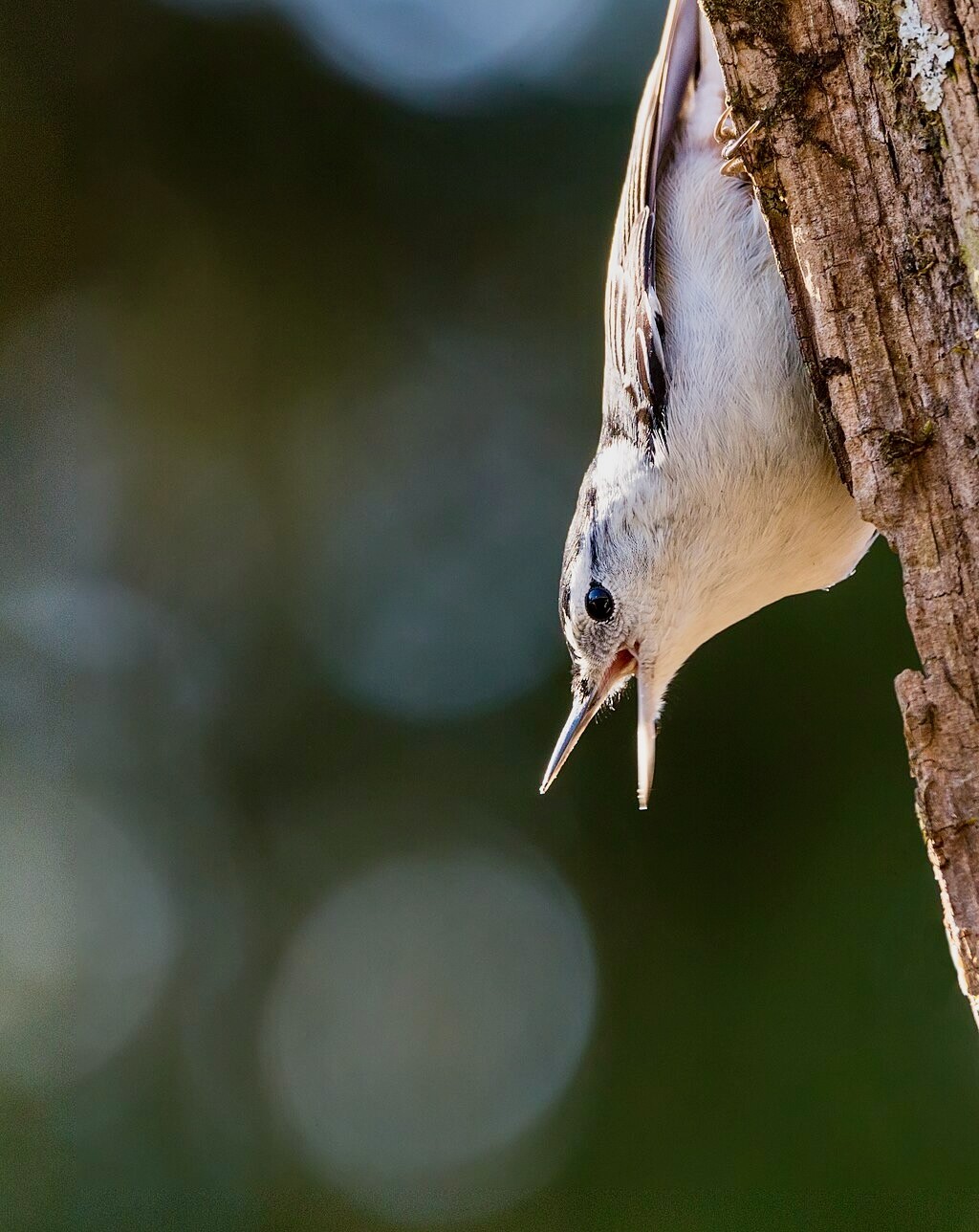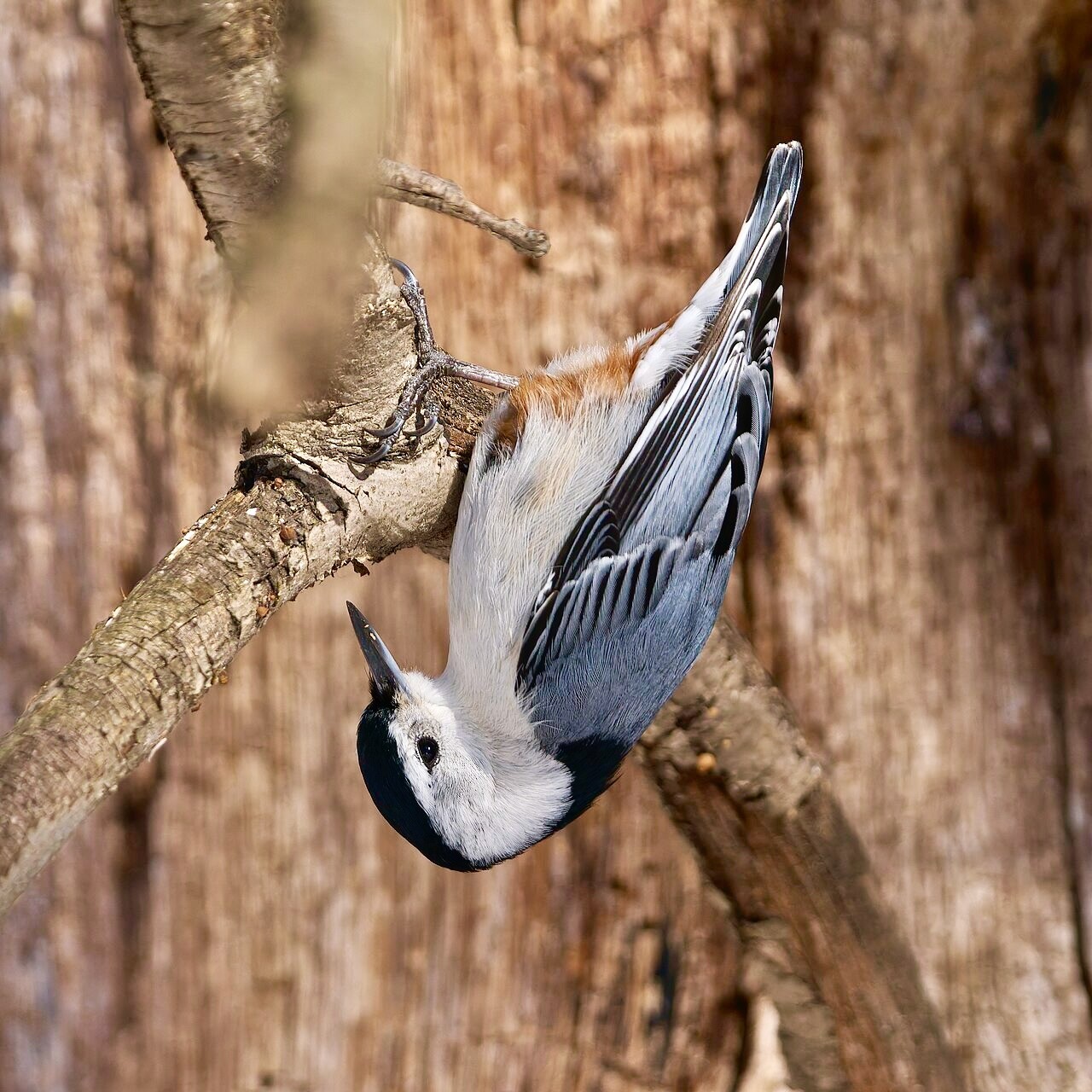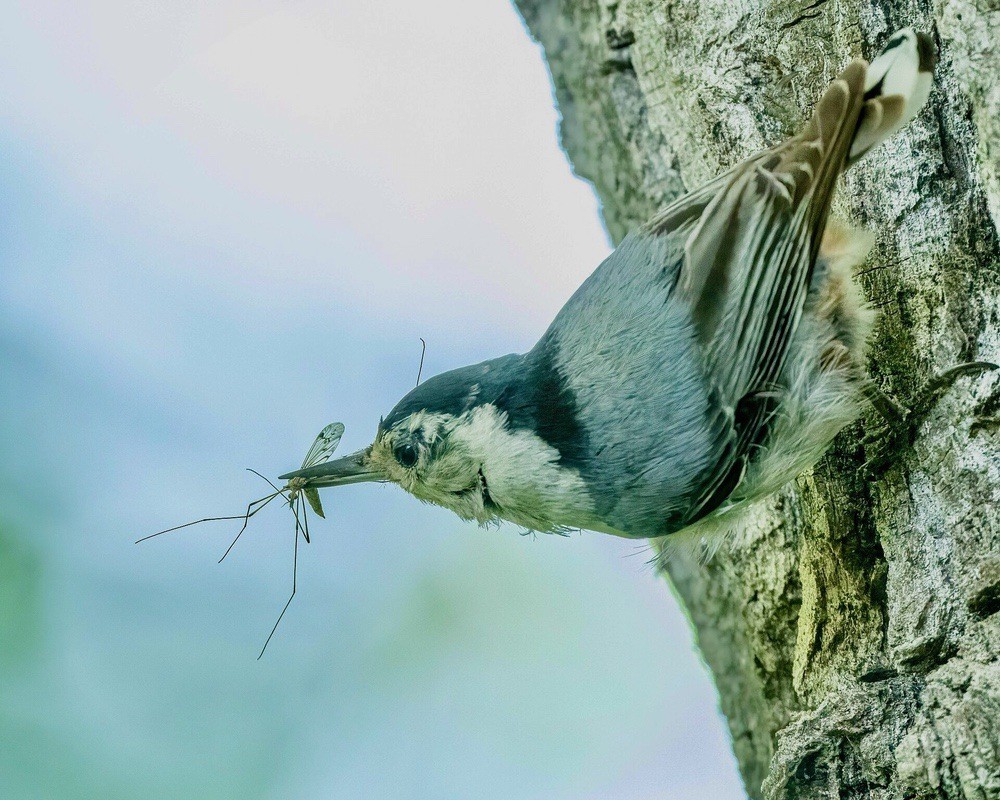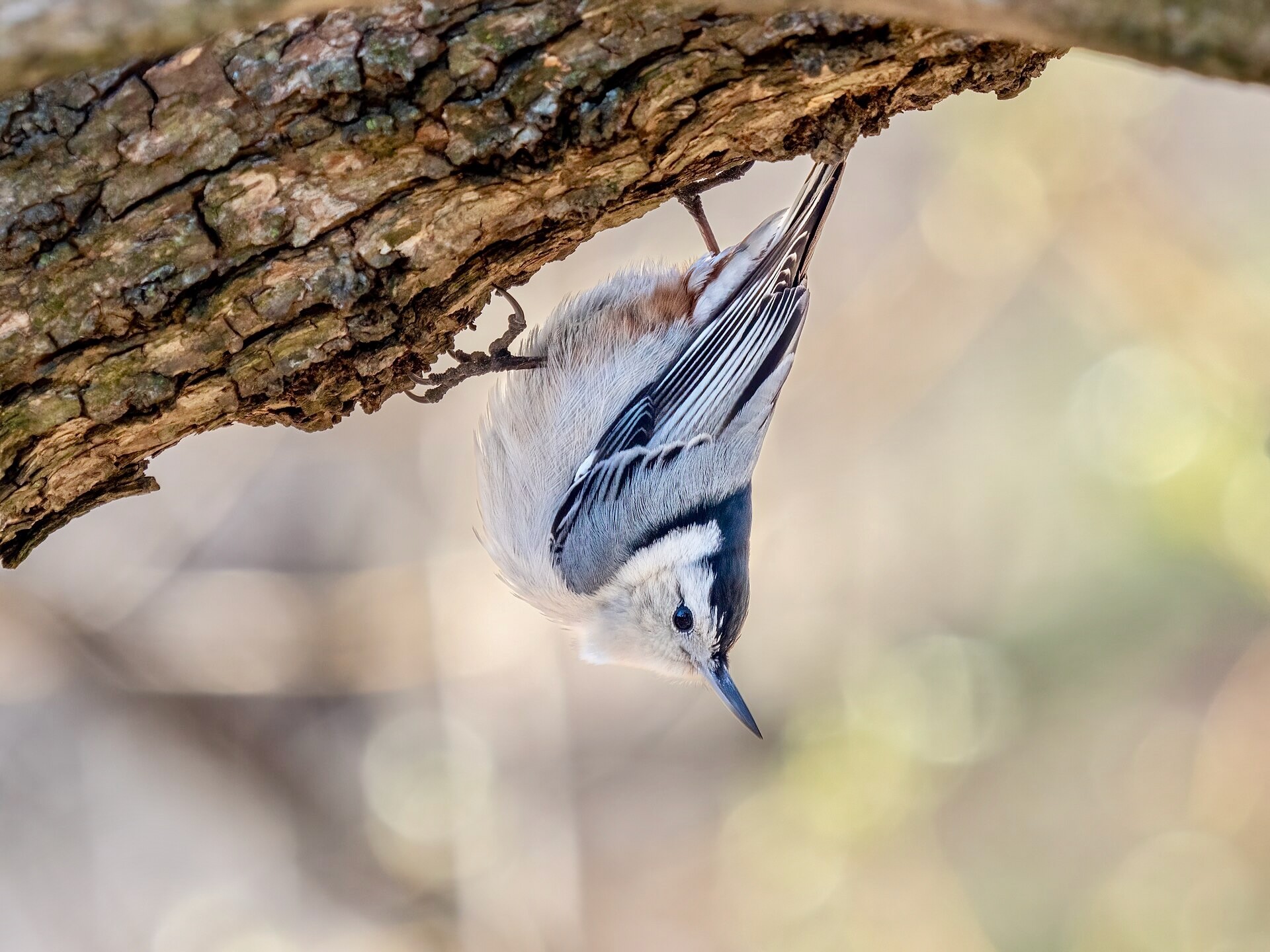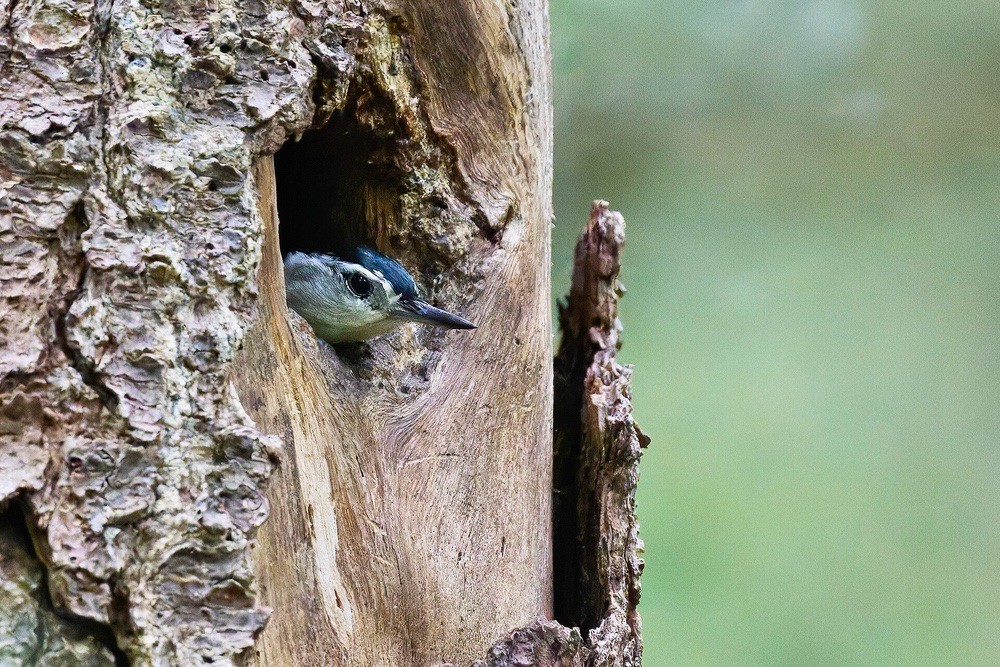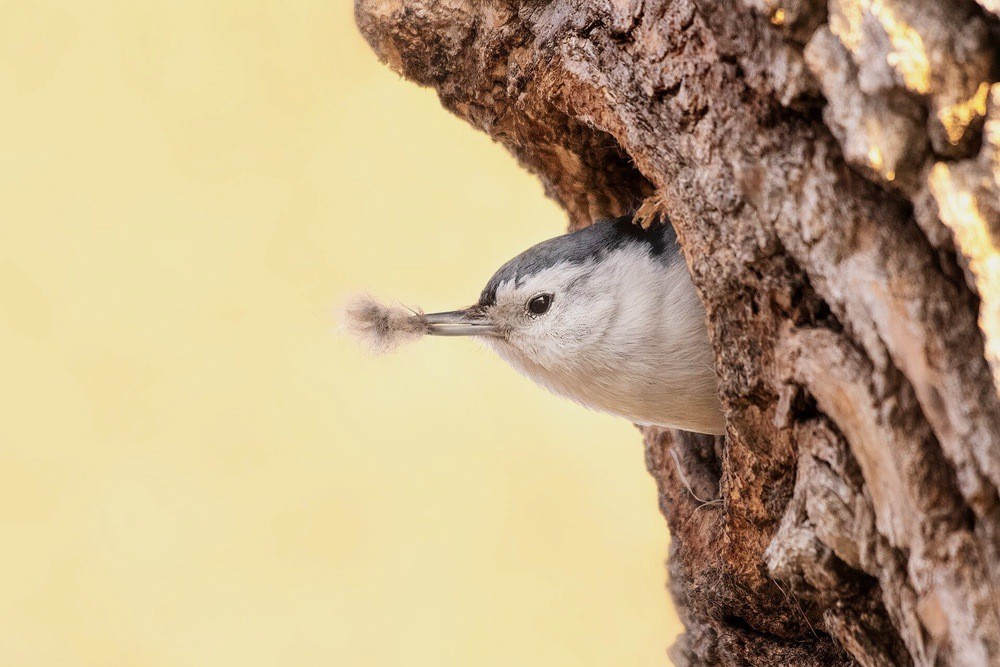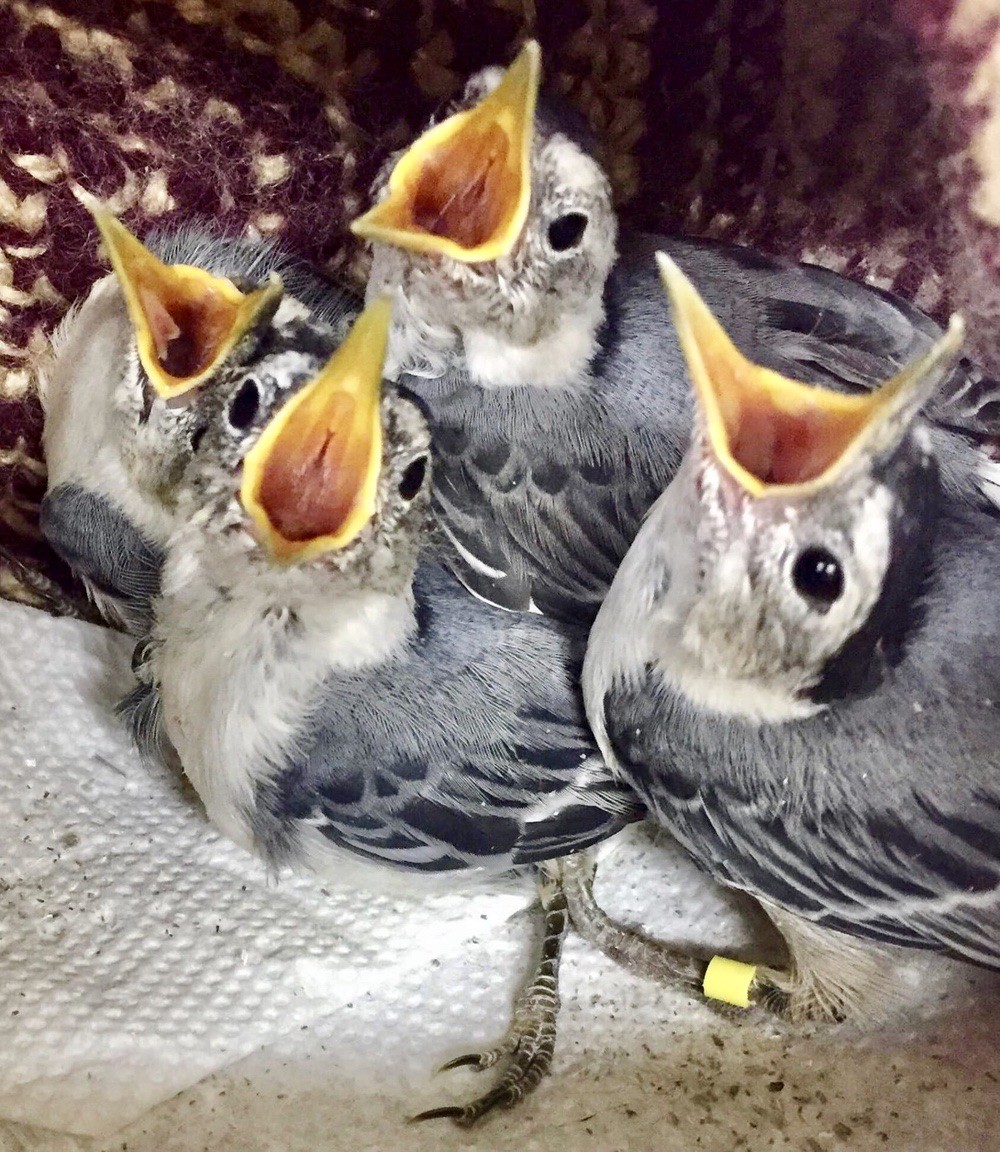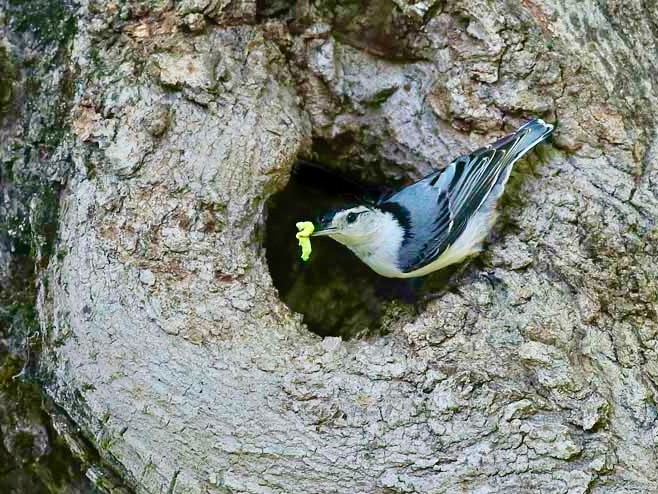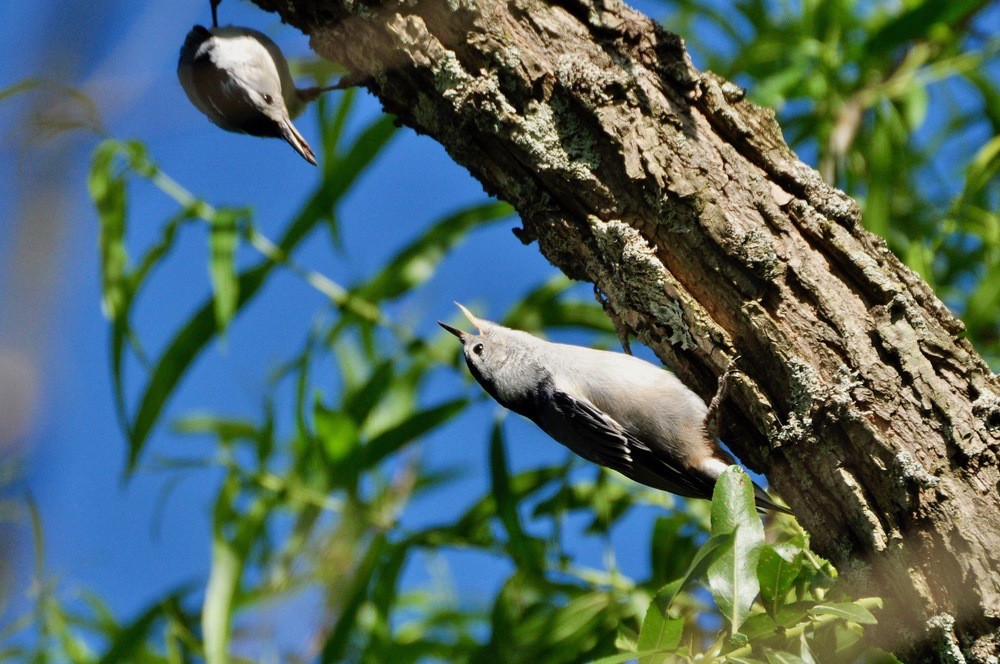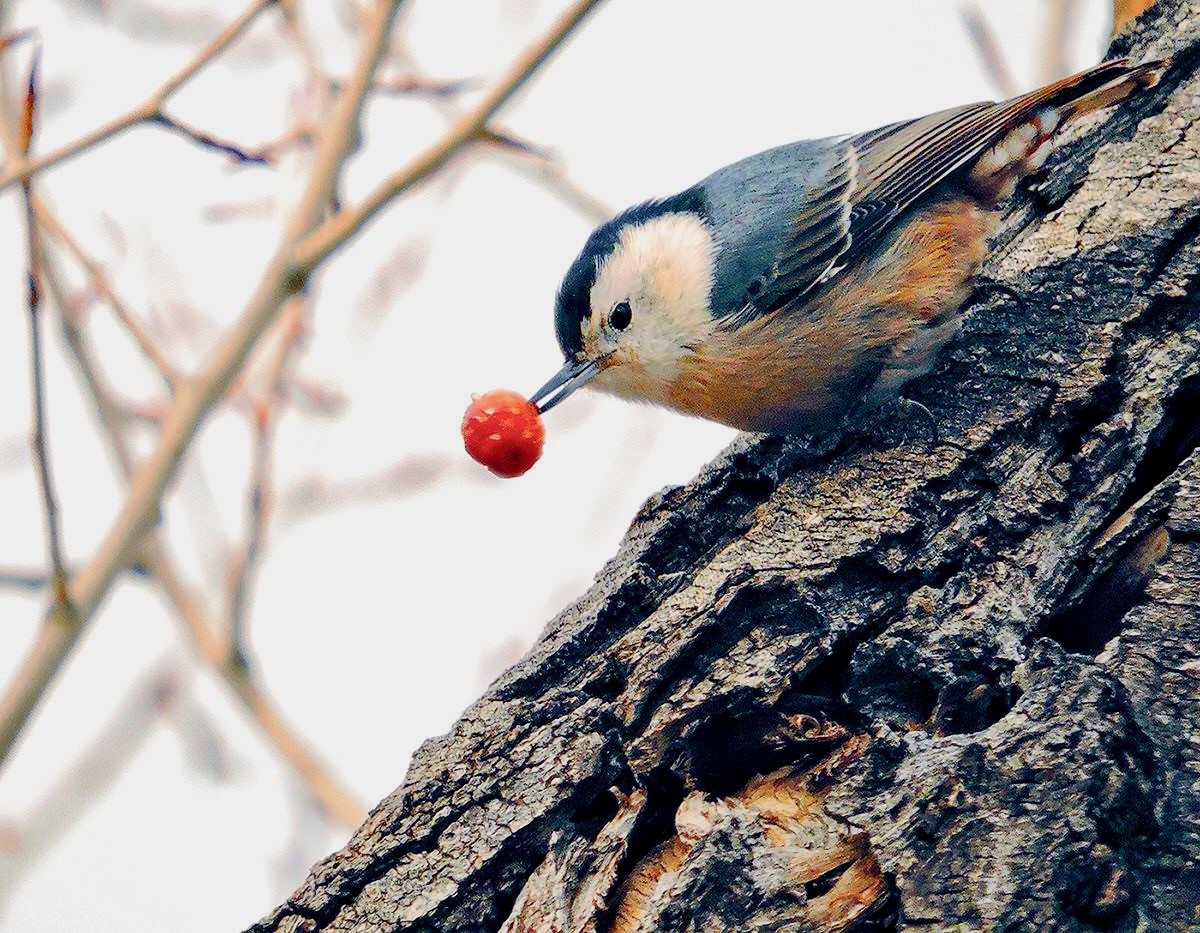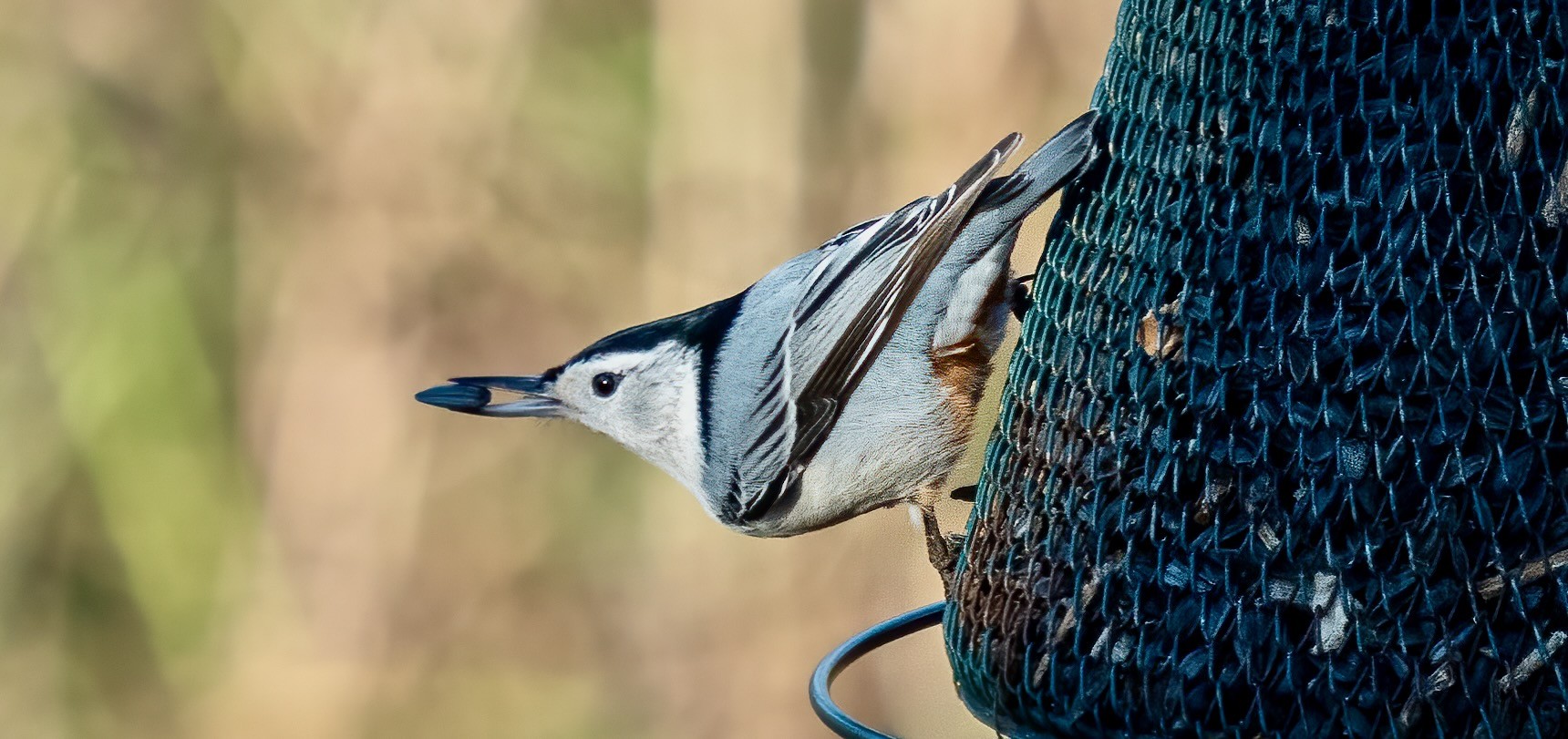White-breasted Nuthatch
As of July 2025, the non-migratory White-breasted Nuthatch has been recorded at Salter Grove for every month except August, which is also the month with the fewest number of checklists.
It may simply be a matter of time before its presence will be documented year-round as more birders visit the park in that month. Sightings have been mostly along Audubon, and Pond Trails in the vicinity of the Pump House where it forages on the roughly textured bark of large black oak and black cherry trees.
Its nasally calls (whaa-whaa-whaa ..., hit-hit-hit ..., and qui-qui-qui ..., among others) often announce its presence even when it may be out of sight on the other side of a large tree trunk. A bit of patience and the observer will be rewarded with seeing the sure-footed nuthatch moving head-first down the tree, searching for insects and eggs hidden in the crevices of bark. Once reaching the base, the nuthatch will fly to the top of a nearby tree trunk to steadily work its way downwards again.
Other tree trunk specialists like woodpeckers and creepers use their stiff tails to brace their climb upwards, but this arrangement is not conducive for downward movements. Nuthatches have short tails and strong claws that allow them to move up and down tree trunks with acrobatic ease.
The white-breasted nuthatch breeds in deciduous or mixed forests and woodlands at low elevations throughout much of North America. It is a cavity nester and would use a natural tree cavity or preferably an old woodpecker nest hole. Such nest sites tend to be more common in mature forest with decaying large trees.
As in other non-migratory species, Nuthatch breeding pairs remain together throughout the year. In winter, they join mixed-species foraging flocks that include Black-capped Chickadees, Downy Woodpeckers, and Tufted Titmice to seek out food in woodland or at feeders. Although Nuthatches feed almost exclusively on insect material during the breeding season, they rely heavily on seeds and fruits in winter.
Often difficult to tell apart when observed in shady woods, male and female White-breasted Nuthatches are readily distinguished at feeders. Males have a black cap while most females have a lighter, grayish head and tend to have more buff on the underside.
Observations at feeders also reveal that male behavior towards the female changes dramatically as the breeding season approaches. During the winter, the male either ignores or dominates its mate over food. But by April, he sings for her and will even carry food to place into her bill.
In the late 1800's, the White-breasted Nuthatch was recorded as a migrant and a winter resident in Rhode Island with a small number breeding locally. However, regrowth of forested lands with standing dead trunks, and widespread suburban feeding stations now support stable breeding populations across the state. It is expected to expand its range into northern Canada and Alaska as a result of the warming climate.
For more information:
https://www.allaboutbirds.org/guide/White-breasted_Nuthatch
https://www.audubon.org/field-guide/bird/white-breasted-nuthatch
https://en.wikipedia.org/wiki/White-breasted_nuthatch
https://www.birdsbybent.com//////////ch21-30/nuthatch.html
Clarkson, C. E., Osenkowski, J. E., Steen, V. A., Duhaime, R. J., and Paton, W.C. (2023) The Second Atlas of Breeding Birds in Rhode Island. Rhode Island Department of Environmental Management Division of Fish and Wildlife. pp. 282-283.
Howe, Jr., R.H. and Sturtevant, E. (1899) The Birds of Rhode Island. p. 16, 85.


